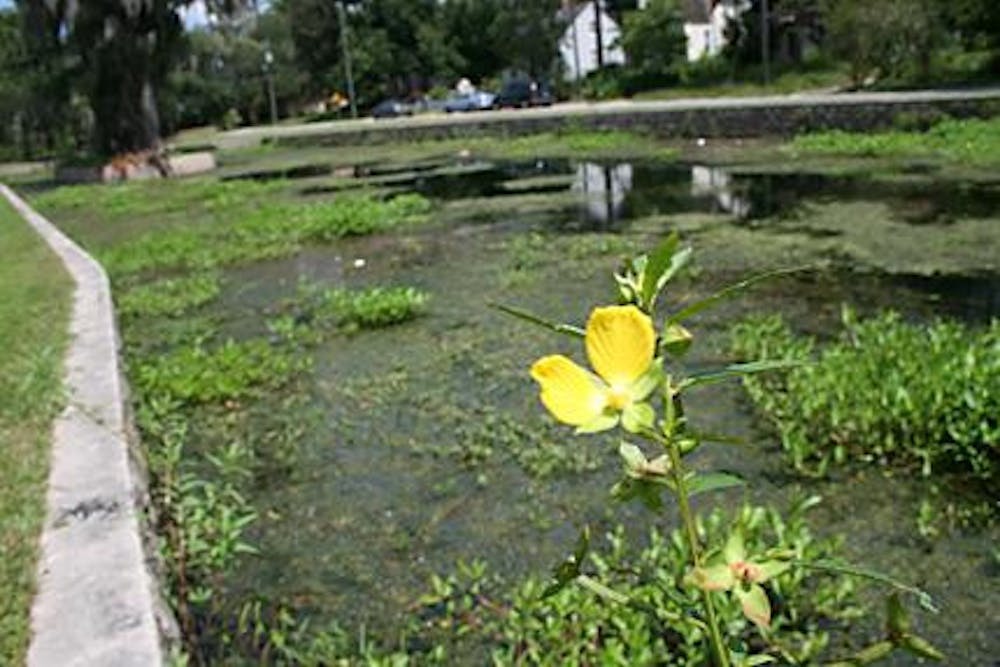After years of being a repository for wastewater of nearby suburbs, Paynes Prairie Preserve State Park could soon return to the conditions of a century ago.
A $23 million project aims to create 1,300 acres of new wetlands and improve those that have become tangled and overgrown.
Last week, Gainesville officials began planning and permitting for the project, which will decrease the nitrogen and phosphorus in the water that flows across Paynes Prairie and east into the Alachua Sink.
The excess nutrients in the water have caused non-native plants, such as the Chinese tallow tree, to choke out the prairie's native species, said Carol Lippincott, an environmental consultant with the St. Johns River Water Management District, which is helping to fund the project.
Funding is also coming from the Florida Department of Environmental Protection, the Florida Fish and Wildlife Conservation Commission, the Florida Department of Transportation and other agencies.
"A lot of people, not just local, but statewide, really appreciate the value of the wetlands," Lippincott said.
Water that hydrates the prairie's wetlands comes from the Sweetwater Branch, which originates in northeast Gainesville's Duck Pond neighborhood, Lippincott said.
Most of the city's runoff storm water - and some of its garbage - runs into the creek, which picks up more nitrogen and phosphorus when it flows south past Gainesville Regional Utilities' Main Street Wastewater Treatment Plant.
The creek flows into a canal cut across the prairie, where it deposits much of the nutrients, and into the Alachua Sink, where the department of environmental protection takes samples to measure Alachua County's water quality.
The plan, which has been under discussion for five years, is two-fold, Lippincott said.
First, $2 million in equipment upgrades at the reclamation facility will cut nitrogen down to 8 milligrams per liter and phosphorus down to 0.3 milligrams per liter, according to a city funding application.
"The water coming out of the enhancement will be more like the water coming out of Sweetwater 200 years ago," Lippincott said.
The canal that carries the Sweetwater Branch through the prairie will also be redistributed into multiple tributaries.
The redistribution will enhance between 100 and 150 acres on the northern rim of the prairie that have been affected by the water's nutrients.
It will also carry water over a larger area, creating 1,300 additional acres of wetlands on the prairie.
The canal that currently runs into the sink isn't natural, Lippincott said. It was dug in the 1950s to give farmers more land to graze cattle.
The enhanced wetlands, which have become inaccessible because of overgrowth, will be able to support a boardwalk where visitors can observe alligators and Sandhill Cranes, Lippincott said.
The levels of nitrogen and phosphorus in the Alachua Sink are not causing a health threat, said Stewart Pearson, the City of Gainesville's head of storm water management. Although the sink's water eventually flows into the aquifer, it would take 100 years for it to reach the north of town, where GRU pumps its water, he said.
If standards are not met, GRU could face fines from the department of environmental protection, said Gina Hawkins, spokeswoman for the City of Gainesville's department of public works.
While $23 million may seem like a hefty price tag, it may be just "a drop in the bucket" compared to fines that could accrue if nothing is done, Hawkins said.
Pearson said that it's not clear how much of the money is coming from the city, but he estimates it will be about 80 to 90 percent.
Most of that will come from GRU storm water and wastewater utility fees, Pearson said.
The storm water utility fees are expected to raise more than $3 million, and the wastewater fees will raise more than $14 million, according to city documents. The department of transportation and the St. Johns River Water Management District have also pledged funds to the project.
"The city is requesting funds from everywhere it can think of," Lippincott said.
After five years of discussion, Pearson said the project now seems like a reality.
"We believe it is," he said. "It's going to take four years to build, but we believe it is."
Map of affected area
View Larger Map






